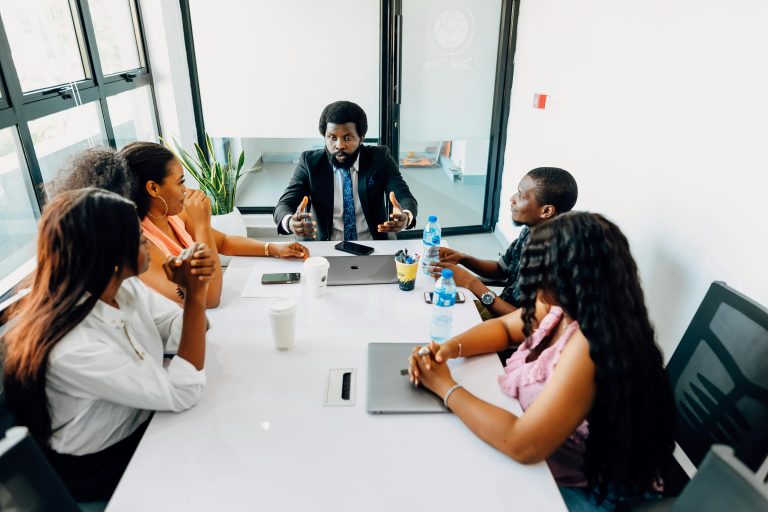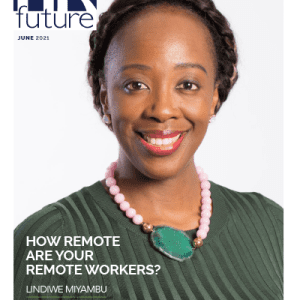Build relationships of trust with these practical body language tips. Have you ever wished that you had a more commanding presence, an arresting stare or a disarming smile? Have you ever wondered what it might be like to walk into a room full of people and immediately captivate everyone’s attention? Have you thought about what it takes to tell a story in a manner so compelling that your audience hangs breathlessly on your every word? A knowledge and understanding of body language is the key.
In the workplace, succession management is about building strong leaders from within the organisation. In order to better motivate your employees to grow into their full potential, model leadership through your actions; this includes body language. The following tips will help you to use nonverbal communication to appear open and confident.
Use open body language
Let’s start with the word “open”. If you are meeting someone for the first time and wish to make a good impression, use open body language to convey that you are happy to be there and excited to meet this person. By smiling genuinely and making eye contact, you will project confidence. When in a board meeting or giving a presentation, make sure to keep your hands in between your chest and waist, and shoulders squared. This will show that you not only are confident in what you are speaking about, but are open to comments and questions. This is also helpful in discussions where you are not the main speaker as well.
Examples of open body language include standing up straight (just like your grandma always told you to do) chest out and open, and arms hanging comfortably at your sides with your hands visible. According to Business Insider, not being able to see your hands can cause the other person to wonder what you might be hiding. Eye contact is also important, as “the ability to gaze at another while speaking denotes authority, confidence and presence.”
Mirror the other person’s body language
Mirroring the body language of the person with whom you are communicating is another way to build rapport. An article published in the WSJ in September 2016 recommends subtly mimicking the body language and energy of the person with whom you are networking.
Make direct eye contact
It is important to elaborate on the importance of eye contact in the workplace. You will never see Bill Gates with wondering eyes; checking the clock and his phone in the middle of a conversation. This is because Bill Gates knows the importance of being present in a conversation, and showing the person he is talking to that they are his main focus.
Show interest
Keeping interest in a drawn out conversation can be one of the biggest challenges in life. Remember the conversations you used to have with your mother, where you would nod your head over and over, saying, “Mmmm …” after each pause. While in reality you were daydreaming about the newest toy in the market. Though this may have worked with your mother, this is the kind of body language that successful business men and women avoid. We’ve been told to nod and answer questions our whole life, but this advice means nothing if it is not genuine. It is obvious when someone is truly involved in a conversation, and in order to really be successful, you have to give every conversation your all.
Live in the moment
Successful business men and women treat every conversation like it is the most important thing in that moment. Having this kind of mindset helps us focus only on the present and have meaningful conversations.
Putting it all together
It is important to follow the simple business tactics we were taught from the beginning. Smile often, shake hands firmly, show your hands, square your body towards the person, and keep good posture. These seem like obvious tips, but it is surprising how many people walk into a room and forget everything they were taught in a simple Business 101 class. Though body language may change slightly in different parts of the globe, many gestures stay the same. If traveling, it is recommended to look into the cultural gestures that a specific country has, so you do not accidentally disrespect someone.
In “The Human Evolution Blog”, Nathan H. Lents, professor of molecular biology at John Jay College of the City University of New York, presents a study on the body language of chimpanzees and bonobos. Both species of hominid use specific body language to communicate. In contrast, the sounds that they make are much less distinct.
Similarly, human beings speak hundreds of languages, yet the gestures used across continents to punctuate speech are universal. Gestural communication is the most natural form there is and, if used well, can be instrumental in your personal and professional success.
Garrett Penn is a freelance writer based in Utah in the USA. He has a passion for everything business and writes to help others succeed.
This article appeared in the October 2017 issue of HR Future magazine.













